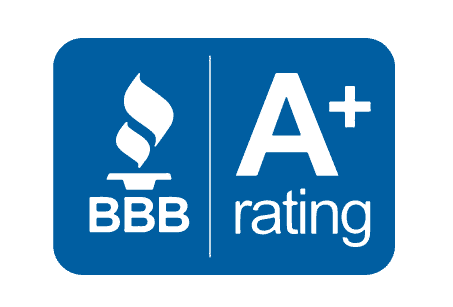Methadone is an opioid substance. Medics originally prescribed it for pain management.
However, it has since become the most commonly used medication in opioid replacement therapy. People attempting to stop using other opioids, such as heroin, oxycodone or fentanyl, are often prescribed methadone. Therefore, it plays an important role in Canada’s fight against the ongoing opioid crisis. It produces a milder opioid reaction that eases the withdrawal process for people stopping use of other opioids. It effects neurotransmitters in the brain, relieving withdrawal symptoms while blocking the effects of other opioids.
We use methodone to help people stop using other drugs, but it is also an addictive substance. It also has a range of other potential side effects, some of them dangerous. For these reasons, methadone should only be taken precisely as prescribed and under close medical supervision.
In recent years, some medical professionals have advocated the use of suboxone for opioid replacement therapy rather than methadone. They believe suboxone is a safer and less addictive alternative. There are also more restrictions on prescribing methadone that suboxone. However, methadone can still be a more effective opioid replacement for some people. Suboxone treatment can also only be initiated during a specific phase of the withdrawal process.
How Methadone Works
You can take methodone as a tablet, powder or liquid or by injection. When used for addiction treatment, it is usually dissolved in a flavoured liquid and taken once daily. Methadone produces a long-lasting effect of around 24-to-36 hours. Opioids such as heroin have a much shorter, much more intense effect.
It can take some time for prescribing physicians to find the correct dosage of methadone for a particular person, as a variety of factors influence the required dose. These include the length of time a person has been using opioids and the quantities they have used, as well as details of their health and physicality. One of the advantages of suboxone is that the process of identifying the correct dosage is usually much quicker.
There is also a higher risk of overdose with methadone than with suboxone, underlining the importance of taking it under strict medical supervision and in the prescribed doses. We discuss the symptoms and effects of methadone withdrawal later in this blog. Due to the risk of overdose, people using methadone should have access to naloxone kits, which can reverse the effects of overdose.
When used for opioid replacement therapy, methadone should ideally be prescribed during the withdrawal period and then gradually tapered off. Some people continue to be prescribed methadone for years. However, many users gradually reduce their use until they are no longer using it and are not dependent on any replacement medication.
Methadone and Other Health Issues
People with certain health conditions should not take methadone. If you have heart disease, lung disease or respiratory problems it is crucial to inform your doctor before starting to use methadone. Likewise, anyone with a history of brain injury, liver, pancreatic or kidney disease, seizures or thyroid problems should disclose this information. Anyone dealing with concurrent mental health disorders such as anxiety or depression alongside their addiction problems should also disclose this, as methadone may affect the symptoms of any conditions.
Methadone can interact negatively with other drugs. Inform your physician of any other substances you are using. You should also inform them of any side effects that occur. Alcohol, sedatives, other narcotics and any drugs that cause drowsiness or affect the respiratory system or central nervous system are particularly likely to interact dangerously with methadone.
Some drugs also cause methadone’s effects to wear off more quickly. It is also very dangerous to take methadone alongside suboxone. It is essential to use only one of these substances for opioid replacement therapy.
Side Effects of Methadone
Methadone can also lead to a range of side effects. It is important to discuss them with your prescribing physician and to report any developments while taking the medication. Side effects may include constipation, nausea and vomiting, excessive sweating, weight gain and drowsiness. If you experience significant drowsiness or slowed breathing, you should contact your doctor immediately, as methadone can affect respiratory function. It may also impact blood pressure. Due to its potential to cause drowsiness, you should not drive or operate heavy machinery while under its influence. If you are pregnant you should also discuss this with your doctor before taking methadone.
Addiction & Withdrawal
It is possible for people using methadone for opioid replacement therapy or pain management to develop a dependence on it. This may begin with exceeding the recommended dose in terms of quantity or frequency of use. Users may also find themselves taking the drug when they do not require it for its intended use. Other signs of addiction include users lying about or otherwise attempting to disguise the extent of their methadone use and continuing to use it despite negative consequences. These might involve negative developments in personal relationships or at work.
We use methadone to ease the withdrawal process for users of other opioids. However, it can also cause withdrawal for people who have developed a dependence upon it. This is why we gradually reduce prescribed doses rather than stopping abruptly. Methadone withdrawal can involve a range of symptoms including nausea, agitation, depression, vomiting, slow or laboured breathing, physical aches, chills or itches, excessive sweating and constipation. In some cases, withdrawal symptoms may also lead to difficulty sleeping, increased blood pressure, increased heart rate and lack of appetite. It is possible for withdrawal to cause seizures. However, when we gradually reduced doses, the withdrawal process is much easier.
Methadone Overdose
As methadone is an opioid, it is possible to overdose on it. This may occur through abuse or accidental misuse. You are more likely to overdose if you have not taken the drug for some time. If they have stopped using methadone but are starting again, it is important to work with the prescribing doctor to identify the correct dosage gradually. It is essential to contact a medical professional immediately if you experience any unusual or severe side effects having taken methadone.
Respiratory issues such as slowed or laboured breathing are common symptoms of overdose. Feeling lightheaded or faint is also a possible sign of overdose. Chest pain or rapid heartbeat may also indicate overdose. Feeling confused, drowsy or disoriented or having hallucinations are also potential signs. Other possible symptoms include swelling of the face, lips or tongue, rashes, and involuntary muscle movements. Overdose may also involve weakened or aching muscles or hot or cold flashes.
Benefits In Treatment
Despite the risks and possible side effects detailed above, methadone can be a valuable resource for people in the early stages of recovery from opioid addiction. When taken through a prescription that is carefully followed, it can ease withdrawal symptoms and cravings in the difficult initial phase of recovery. This substantially decreases the risk of relapse and makes it much less likely that withdrawal symptoms will become dangerous. However, these benefits only occur if the drug is taken under medical supervision, precisely in the manner prescribed. Users should also gradually taper off methadone once they have progressed through withdrawal and can continue their recovery without it.
If you have any questions about methadone use in opioid replacement therapy, contact Trafalgar Addiction Treatment Centres today.





